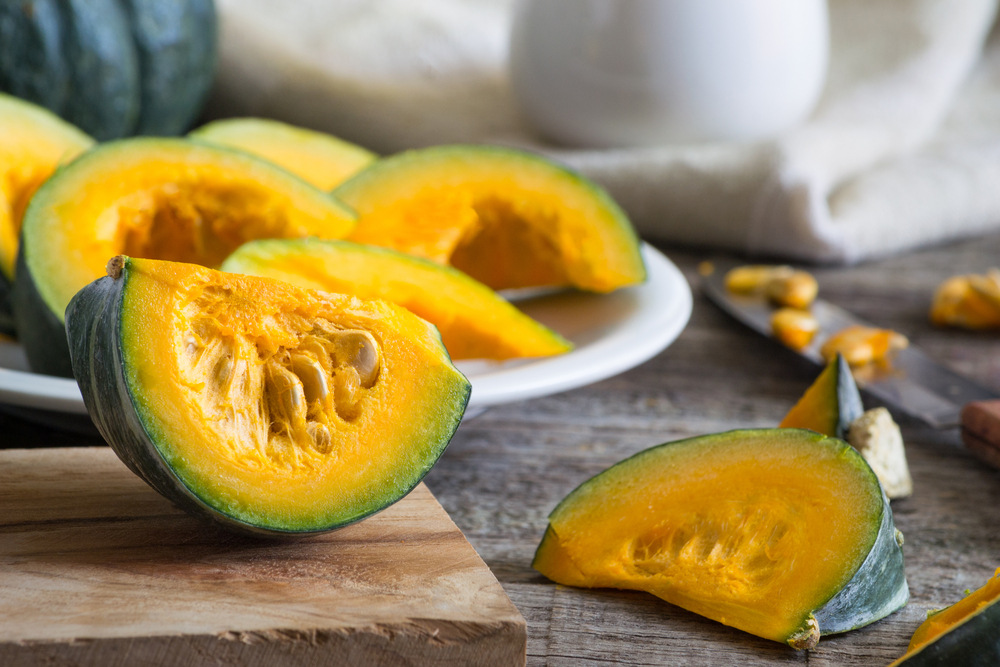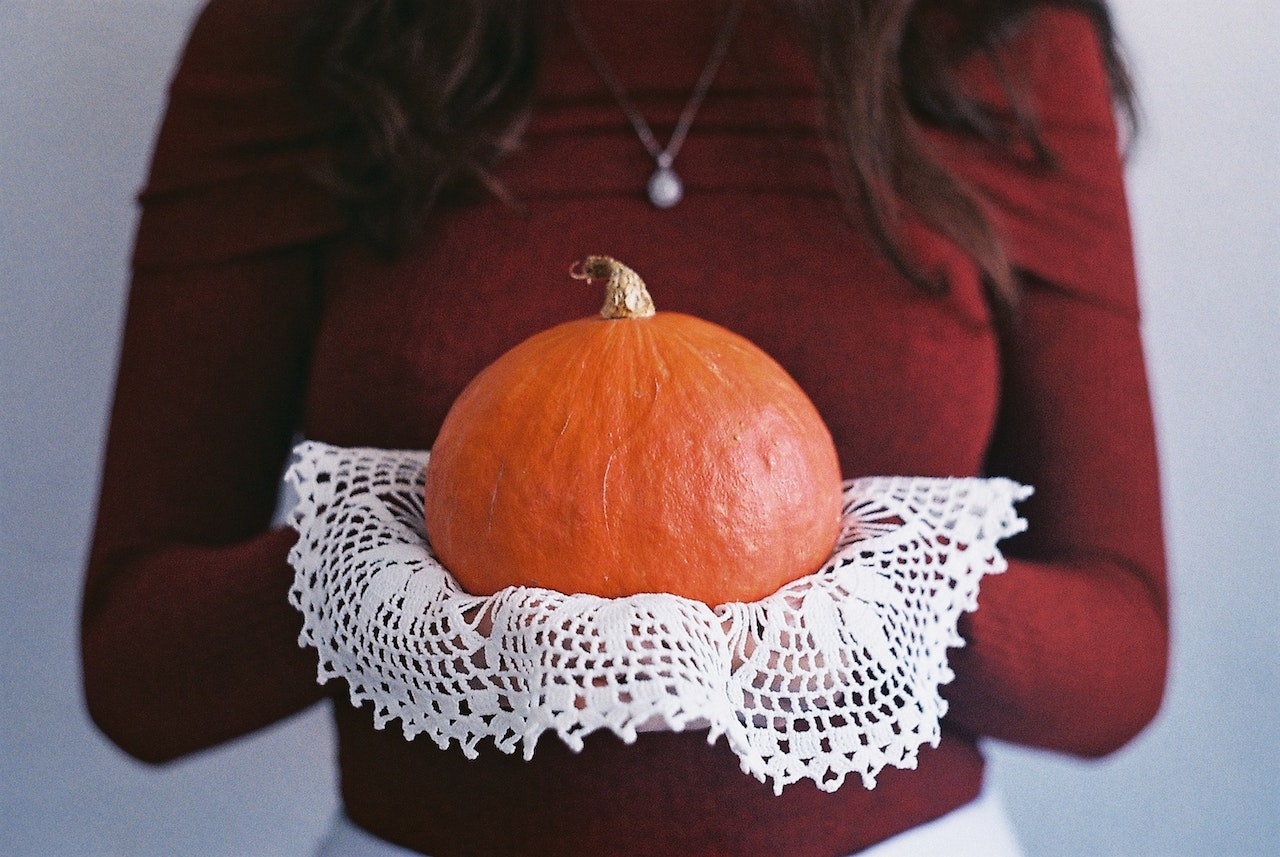When you hear the word pumpkin, the first image that comes to your mind may be the orange-carved Halloween pumpkins. However, there are a variety of pumpkins that you may not know of! Some of the best pumpkins for eating may just come as a surprise to you. You’d be surprised at how many different kinds of pumpkins there are. There isn’t just one enormous, orange pumpkin — there are dozens of variants ranging in length from 2 feet to 20 feet.
Pumpkin is a type of squash and is classified as a fruit rather than a vegetable. Backing up the same, our contributor Trish Gomez, RDN and Certified trainer, says, “Pumpkin is considered a fruit, because botanically, anything that starts from the flower of a plant is considered a fruit.”
These fruits come in a lot of varieties — there are pumpkins for eating, pumpkins for carving exclusively, and pumpkins that are excellent for both. While most people love eating pumpkin pies, you’ll be delighted to know that there are several delightful ways to eat them. Edible pumpkins are utilized all around the world in savory dishes, traditional pumpkin pies, and other baked foods. When you know which varieties to plant for cooking, you can make delicious muffins, pancakes, soups, stews, and even pumpkin lasagna.
20 Types of Pumpkins for Eating
1. Black Squash Futsu
Black Futsu is an heirloom Japanese pumpkin. It comes with elegant, deeply ribbed, bumpy skin that has a warm orange-buff color. It has edible skin and nutty-flavored flesh.
2. Cheese Pumpkin
Another edible pumpkin is the Long Island cheese pumpkin or also known as the Cinderella pumpkin. Despite its name, the Long Island Cheese Pumpkin looks nothing like cheese. Its rounded and ridged body is squat, like a wheel of cheese, and has a delicate cream-to-pale apricot tint. This is a medium-sized pumpkin type that typically weighs between six and ten pounds.
3. Cherokee Bush
This type of pumpkin produces a large number of traditional orange-colored pumpkins. However, do not employ these delectable specimens as jack-o’-lanterns because then you wouldn’t cook them. You’ll get a lot of five- to eight-pound fruits with excellent golden flesh if you grow Cherokee Bush. The fruits weigh five to eight pounds, and the gold-yellow flesh tastes delicious when roasted as a foundation for a cream soup or pureed to add to muffin batter or pancakes.
4. Cushaw Green – Striped
When looking for pumpkins to eat, one variety that can be quite exciting to try is the Cushaw Green pumpkins. While the most recognizable cushaw has frosted green-and-white bands, they may have a range of colors from tri-colored to orange-and-white striped to a majestic and ghostly white. The Cushaw has a green summer squash flavor and aroma. It has a smokey flavor and is juicy and can be used in both savory and sweet recipes.
5. Casper
People may often end up using Casper as a decorative Pumpkin because of its distinct white skin. But don’t dismiss this pumpkin while considering the best pumpkins for eating. It yields 15-pound fruits in 115 days, which is ideal for cooking. The flesh of this pumpkin is sweet and hence is commonly used for baking or in pies.
6. Connecticut Field
A well-known type of pumpkin is the Connecticut Field Pumpkin. It is often used for fall decorations, either whole or as jack-o’-lanterns, and it is also edible. Similar to other pumpkins, the Connecticut field pumpkin is large 15-25 pounds, spherical, and orange, with smooth, slightly ribbed skin. It is also used in traditional pumpkin pies as the flesh is super tasty.
7. Fairy Tale
The Fairytale pumpkin is another pumpkin that is frequently linked to Cinderella’s carriage. Fairytale is a squat, dusty tan with well-defined parts. The rich orange flesh comes in handy in the cooking. Fairytale pumpkins lend themselves perfectly to dishes that require the entire fruit, such as filled pumpkins, due to their lovely form. When ripe, the fruits weigh around 15 pounds, and the straight seed to harvest time period is 125 days. The deeply loved fruit has superb dark orange flesh that is solid and silky which is great for cooking, and this patience will pay off for the determined home cook.
8. Dill’s Atlantic
If you ever visited your state fair, you may have witnessed a Dill’s Atlantic pumpkin win the blue ribbon in a contest for the largest pumpkin. These pumpkins have the capacity to grow to be quite large. The world record for the biggest pumpkin is held by a 1,500-pound Dill’s Atlantic. However, if you opt to plant Dill’s Atlantic, be aware that the pumpkins will require more time and attention, as well as more garden area. Because these pumpkins grow so huge, they require a lot of moisture. This type, on the other hand, will repay your time and effort. These pumpkins have some very tasty flesh, and because the fruits are so enormous, you won’t need too many to fill your freezer.
9. Flat White Boer Ford
This is a delicious decorative and eating species that was previously popular in South Africa and was called after the Dutch Boers after the colonial power. These are attractive, pure white pumpkins that are both appealing and appetizing. The extremely delicious orange flesh is ideal for pies and pastries.
10. Jarrahdale
Jarrahdale is a fast-growing pumpkin that matures in about 100 days. These lovely pumpkins have a unique blue-green color and a flattened form. The flesh may be used in sweet recipes, although Jarrahdale is especially well suited to savory meals. This is due to its stringless meat, which keeps its shape nicely when cubed for roasted vegetable dishes, stews, and other applications.
11. Musquee De Provence
These ancestral cooking pumpkins are from France and date back to 1899. They yield an excellent firm, sweet orange flesh that may be used in both sweet and savory dishes. The pumpkin is named after its aroma which is musky and known as ‘Muscade de Provence’. The shell of this pumpkin is ribbed and lobed with a brown-deep pink color rather than the blazing orange of the traditional jack-o-lantern.
12. Kabocha

Kabocha is a kind of Japanese winter squash. It has knobbly-looking skin on the exterior. It has a squat pumpkin form and a dull-finish, deep-green skin with celadon-to-white stripes on the outside and an intense yellow-orange color on the interior. The flesh is yellow in color and tends to remain firm when diced for stews. It is quite sweet, much sweeter than butternut squash. It has the texture and flavor of a pumpkin and a sweet potato mixture.
13. Lakota
These are beautiful orange teardrop pumpkins with eye-catching dark green patterns. They’re not too big for table presentations, so you can keep them out in the open and decorate with them until it’s time to cook! The flesh may taste mildly sweet.
14. Kakai
Kakai pumpkins are a small to medium-sized variety of pumpkins that weighs between five and eight pounds. They are distinguished by their dark green to black vertical stripes and their hull-free, dark green, edible seeds. The flesh of the Kakai pumpkin, while edible, may not be as tasty.
15. Lumina
These lovely white pumpkins are renowned for their looks as well as their flavor. The smooth texture also makes them suitable for carving, but we wouldn’t advocate sacrificing any of these pumpkins’ tasty flesh for a jack-o’-lantern. The bright yellow flesh is excellent for baking.
16. Pepitas Hybrid
While you wouldn’t necessarily want to eat the flesh of these pumpkins, you may just want to know about them and hence they are on the list. The seeds may just be the exciting part of this pumpkin. Pepitas Hybrid seeds are shell-free, or “naked,” and can be slow-roasted for snacks or used as a topping for other recipes in your kitchen. The nine- to ten-pound fruits have orange shells brushed with dark green. After you’ve plucked the seeds, preserve the shells for decoration.
17. Red Warty Thing
You may have guessed something about these pumpkins from the name itself. These pumpkins are bright orange-red in color and covered in warts. They may grow up to 20 pounds and produce a lot of tasty fruit. However, you should be aware that the warty rind can be quite a task to remove. However, because they grow so large, your efforts will possibly be worth the effort.
18. Rouge Vif D’etampes
Most of us think of pumpkins as round and orange however, this pumpkin type is actually flat! To top this the color is rouge red. Apart from its appearance, it has a hefty, dense meat that is a staple component in cozy, savory fall recipes ranging from roasted soups to vegetable curries.
19. Cinderella Carriage
As the name suggests, this pumpkin looks just like Cinderella’s carriage from the Disney version. The appearance is flat and reddish-orange. Despite being a watery kind, it is a sweet pumpkin that may just be good for cooking. So, when your neighbor’s display in November wears out and they start putting up Christmas lights, you can take their pumpkins, fry them up, and invite them over for our favorite pumpkin dessert.
20. Blue Prince Pumpkin
Blue Prince Pumpkins are flat blue-colored pumpkins and you may find them attractive because of their peculiar color. They usually weigh between 7-9 pounds and may make a lovely display if you can get them. They also cook nicely because they have creamy flesh that is less stringy than other pumpkins and a pleasant flavor.
Which Pumpkins Are Best for Eating?

Looking at so many varieties of pumpkins can send anyone into a state of chaos and confusion. It can become really hard to decide which pumpkin to choose and what to make. The above list of pumpkins can be widely used in cooking and baking. Each of these is packed with vitamins and nutrients which are beneficial for overall health and immunity. While some pumpkins that are also known as sugar pumpkins may be better used for baking pies, each of them is fleshy and can be used for stews and other dishes. You can also roast pumpkin seeds to eat them as a snack or add them as a garnish on your salads!
Health Benefits of Pumpkins to Know About
While these round and sometimes reddish-looking vegetables may seem perfect for Halloween decorations and pies, they are also beneficial for your health. When looking at the best pumpkins for eating, it may help to also look into some of the benefits of including them in your diet.
1. Rich in Beta Carotene
They are an excellent source of beta carotene which is a powerful antioxidant that gives the fruits their bright color (1). Our body tends to convert this beta carotene to vitamin A. Sharing more on the topic, our contributor Trish Gomez, says, “Beta carotene is a powerful antioxidant, protecting our bodies cells from damage. Regular intake of antioxidants can reduce inflammation, help strengthen our immune system, and reduce our risk of heart disease, cancer, and cognitive decline as we age.” Eating foods rich in beta carotene can prove to be beneficial in reducing the risk of various types of cancer. They can also help by protecting against asthma and heart diseases. Apart from this, they can also help with decreasing the risk of age-related macular degeneration (2).
2. May Help Regulate Blood Pressure Levels
Pumpkin is beneficial to the heart. Fiber, potassium, and vitamin C present in pumpkins benefits heart health (3). The findings of a research done in 2017 consisting of 2,722 participants, eating adequate potassium may be almost as crucial as lowering sodium in the management of high blood pressure (4). High blood pressure can be a major risk factor for people with cardiovascular diseases. Typically, lowering sodium consumption entails eating meals with minimal or no salt. More research is needed to validate the effects of pumpkin consumption on the risk of stroke and cardiovascular disease.
3. May Help Manage Diabetes

Incorporating pumpkin into your diet may actually help people who have diabetes to manage their blood sugar levels. Research done in 2019 showed that a combination of pumpkin and another plant extract lowered blood sugar levels in mice (5). Even though the study did not include humans, the findings suggest that these plant chemicals may have the ability to reduce type 2 diabetes.
According to Shikha Agarwal, a Certified Nutritionist, “Pumpkin can be beneficial for diabetics when consumed in moderation as part of a balanced diet. Pumpkins are low in carbohydrates and calories, making them a suitable option for managing blood sugar levels. They also contain dietary fiber, which can help slow down the digestion and absorption of sugars, preventing rapid spikes in blood sugar after meals. However, it’s important for diabetics to monitor their portions and be mindful of how pumpkin is prepared – avoid added sugars and high-calorie preparations.”
4. May Help Boost Immunity
Pumpkin is high in nutrients that might help your immune system. According to research, vitamin A can boost your immune system and help you fight illnesses. People who are deficient in vitamin A, on the other hand, may have a weakened immune system (6), (7), (8). Pumpkin is also abundant in vitamin C, which has been found to improve white blood cell formation, aid immune cell function, and accelerate wound healing (9), (10).
Shikha Agarwal further adds, “Pumpkin can boost immunity due to its rich nutritional profile. It contains high levels of beta carotene, a precursor to vitamin A, which plays a crucial role in maintaining the integrity of the skin and mucous membranes – the body’s first line of defense against pathogens. Vitamin A also supports the immune system’s response to infections. Additionally, pumpkin provides vitamin C, an antioxidant that helps protect immune cells from damage, and it contributes to the production and function of white blood cells. The presence of minerals like zinc in pumpkin further supports immune function by aiding in the maturation of immune cells and assisting in the inflammatory response. The combination of these nutrients in pumpkin contributes to strengthening the body’s immune defenses.”
Conclusion
There is a wide variety of pumpkins available in the market which makes it difficult to decide which are the best pumpkins for eating. Most of us expect them to be round, but you may be surprised to find them in more than one color. Right from blue, and green to red and orange, there are all kinds. You can choose your pumpkins based on the availability and the type of food you wish to cook as some are sweeter than others. Pumpkins in general come with a host of benefits which may make it a food you want to add to your diet. Eating pumpkin can boost your immune system, and help with managing blood pressure and even diabetes. These vegetables are packed with vitamins and nutrients that make them a good addition to your diet.
Contributor: Trish Gomez, Registered and Licensed Dietitian and Certified Personal Trainer

0 Comments
Post a Comment